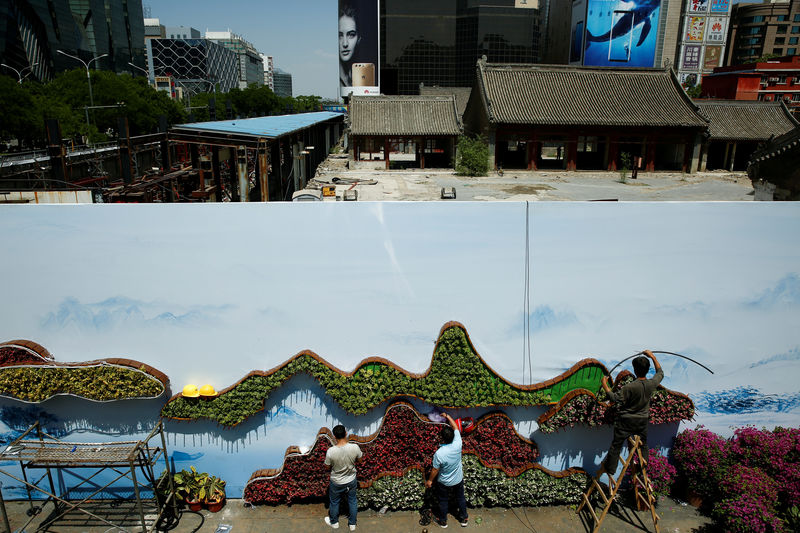By Umesh Desai and Patturaja Murugaboopathy
HONG KONG/BENGALURU (Reuters) - At first glance, China Inc's earnings are off to a roaring start to 2017: first-half net profits surged by nearly a quarter, helped by healthy expansion in the world's second-largest economy. Last year, the rise was a mere 6 percent.
Robust profits have been a key factor in pushing the benchmark Hong Kong index to three-year highs and its Shanghai counterpart to its strongest levels in 20-months.
But the corporate investment and M&A that is driving those earnings is being fuelled by growth in debt that is too rapid for comfort, analysts say. Frequent use of one-off gains to lift results and unhealthy fundamentals in some sectors may also give investors pause for thought.
Total debt at some 1,200 firms listed in Shanghai, Shenzhen and Hong Kong as of end-June grew 13 percent from a year earlier, Reuters calculations show, much faster than the first half of 2016 when the rate was 7.5 percent.
Profits were not used to retire debt in significant quantities over the period and cash levels at those firms, selected for the survey as they have reported earnings for at least two years in a row, shot up 12 percent.
All in all, debt-to-equity ratios were little changed from last year, an indication that hopes of a broad deleveraging for Chinese firms, widely seen as having worrisome debt levels, seem premature.
"These earnings improvements are credit driven and I have doubts about the sustainability," said Andrew Kemp Collier, managing director at independent research firm Orient Capital.
China's property developers have led the way in debt creation, and even if some of the most heavily burdened like China Evergrande did cut back, others kept borrowing.
Acquisition-hungry Sunac saw contract sales almost double and gross profit climb 86 percent, but its total borrowing also jumped, up 60 percent to nearly $28 billion.
"The picture is not as rosy as shown by rising earnings – credit is accumulating faster than nominal growth," said Natixis Chief Economist Alicia Garcia Herrero, also noting that very short term debt is not captured in conventional leverage ratios.
A study by Natixis shows Chinese companies on average have 68 percent of their liabilities in loans of less than 12 months - seen as riskier due to the need to refinance - compared with a global average of 38 percent.
A QUESTION OF QUALITY
China's economy has surprised experts with its resilience, growing by a faster-than-expected 6.9 percent in the first half, on resurgent exports and healthy retail sales - even if it is expected to start to lose some steam.
But earnings gains in some sectors, while welcome, were not necessarily due to strength in core businesses.
Oil majors saw revenue and profits gain, but this was due to a average 28 percent jump in oil prices, while oil and gas production volumes fell 2 percent in the first half versus a year ago, according a Fitch ratings report.
And while China's largest banks showed improvement, smaller banks which rely on short-term borrowings from other financial institutions saw net interest margins contract and some were struggling. Shengjing Bank's first-half operating income slid almost 17 percent.
The banking sector will also have to bear the brunt of excessive borrowing.
"Credit-fuelled excess investment is building up problems with assets that are likely to yield a poor return over time, and many are likely to turn into bad debts," said Richard Jerram, chief economist at Bank of Singapore.
One-off or foreign exchange gains were also frequent across a range of industries, dressing up results even when sales or operating profit weakened.
Lianhua Supermarkets, which is part-owned by Alibaba (NYSE:BABA), reported a 6 percent drop in turnover on store closures and competition from online sales, but a substantial gain on the sale of financial assets.
Sun Art Retail, China's largest big-box retailer, posted 23 percent jump in profit but that was largely due to gains from expired prepaid cards, while same-store sales saw a slight decline.

Air China reported a small decline in net profit, partly due to by higher fuel costs. But if exceptional items, largely foreign exchange gains, are excluded, results were 60 percent lower.